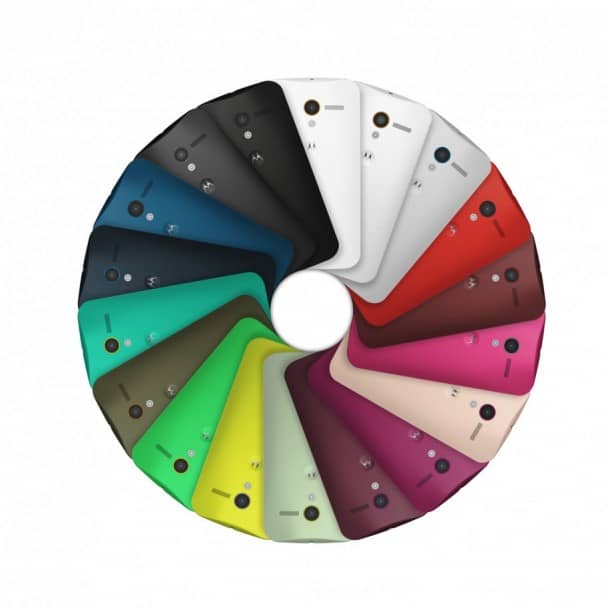
When it comes to mobile, 2013 may well be remembered as the year of color.
Rumors abound that Apple will launch a gold(finger) iPhone. And last month, Google’s Motorola Mobility unit also jumped aboard the color express with the Moto X, an Android-based smartphone available in just about any color and texture you could imagine.
We’ve come a long way since Apple shocked the world with the intro of a–gasp–white iPhone.
Unfortunately, underneath all the brouhaha, there’s actually little innovation taking place. Refinement? Yes. Faster speeds? Of course. High resolution? Well, mostly (though here’s a case where a step backwards, such as Motorola’s decision to go with 720p instead of full HD for the X, could be a smart battery-saving move that places a premium on user experience over specs).
Color this time around, though, is being used by tech companies as a lazy marketing crutch.
A while back I wrote about the dawn of the Incremental Era – that is, in my estimation, the greatest strides in this generation of mobile tech are behind us. That’s not to say there won’t be any innovation; that would be a fool’s errand to remotely suggest. But smartphones and tablets are maturing, both the products and the markets. For growth, manufacturers need to look to emerging markets where feature phones users are ready to trade up to entry-level smartphones (possibly an iPhone 5C, for example). There, say in Africa, or less-developed parts of China, the touch revolution has yet to begin. Meanwhile, here in the U.S., and especially Silicon Valley, we’re App’ed out, man. Our smartphones are great. Indispensable. But the “Next One” is merely going to bring us something slightly improved, not dramatically game-changing. Hence: Color as a marketing theme.
It’s not the first time that we’ve seen color used to engender emotional attachment to a tech product.
The color iMac famously started the anything-but-beige movement. But that was-ahem-different. It was 1998, and the all-in-one PC was about to get a dramatic makeover. Getting an iMac in Bondi Blue was just part of Steve Jobs’ master plan. Don’t forget: he boldly (against harsh backlash) refused to build in a floppy drive, used a translucent case to expose previously unseen innards to curious consumers, and incorporated a then unproven USB port.
Color in tech this time around, though, is being used as a lazy marketing crutch.
Sure, I get that “personalization” is a big deal. If someone feels they were somehow part of the design process for their smartphone, they’re more likely to have increased affinity; that can, as Motorola hopes, lead to strengthened brand loyalty. But it seems that despite some big launch events–BlackBerry 10, Samsung Galaxy S 4, HTC One, and Moto X–we’re not seeing close to the levels of innovation that we saw four years ago. The latter part of that decade saw the introduction of the iPhone, and iPad, both creating entirely new product categories in the smartphone and tablet respectively. Droid Does in 2009, started the Android ascent – Apple’s early stranglehold, achieved thanks in part to stunning design and unparalleled understanding of human behavior and its relationship with user interfaces, in addition to first mover advantage (which investors loved), all of a sudden seemed marginally less like Fort Knox. Years later, with the death of Jobs, and the slowing of product cycles, it would come to even seem vulnerable.
So, yes, the next iPad Mini will be better. As will the next iPhone. The next Nexus (wouldn’t it be nice if it were made by Motorola this go around? But I doubt it). However, for now the market is taking a breather. We can’t reasonably expect a gesture-revolution, an app-revolution, a tablet-revolution every 18 months.
For now I’ll take my next smartphone, just like I take my coffee:
Black.


